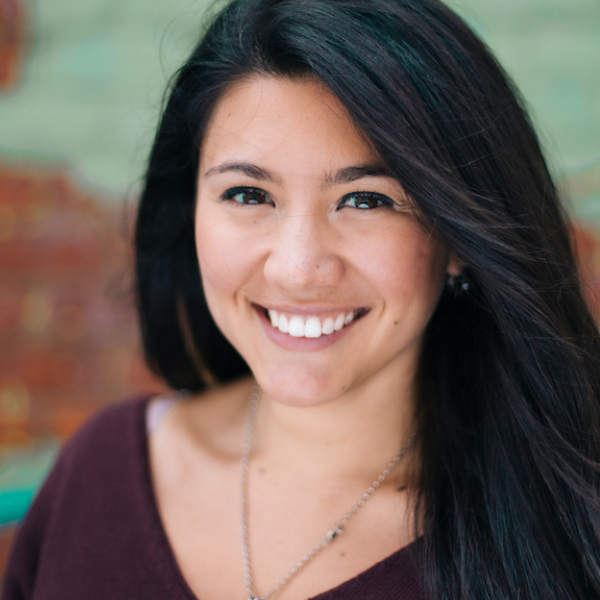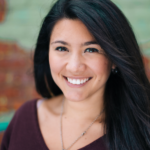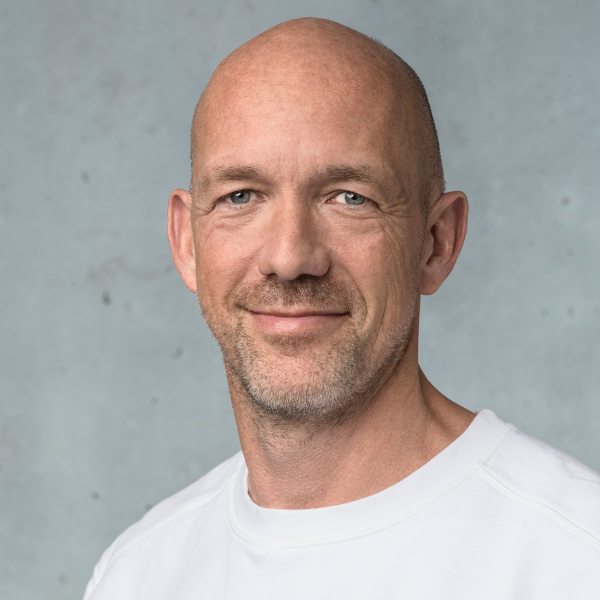
For the past five years, Gill Bejerano has been working toward a system that will help doctors diagnose single-gene diseases. More than 6,000 unique diseases can now be diagnosed based on a single genetic marker, he says, but there are some serious computational challenges when it comes to comparing an individual’s genome and medical record to the exploding body of scientific knowledge about genetic disease signatures. His interdisciplinary approach — he holds associate professorships in Stanford’s departments of Developmental Biology, Computer Science, Pediatrics and Biomedical Data Science — undergirds a research lab that seeks to surmount those computational barriers.
“We’ve been working towards a computer system that will constantly aid clinicians in figuring out which patient has which disease,” Bejerano says. “In academia, you can only build the individual parts, and show that your solution is better than what anyone has done before you. But you can never really put the whole system together. Integration, day to day operations, these things don’t happen in academia. So what would it take to make this vision come true?”
“In academia, you can only build the individual parts, and show that your solution is better than what anyone has done before you. But you can never really put the whole system together.” —Gill Bejerano
He started out by having conversations with Stanford’s Office of Technology Licensing (OTL). That office manages Stanford’s intellectual property, including working with faculty and students on patent filings, while also evaluating the commercial potential of new inventions and working to license the intellectual property to organizations that can develop Stanford discoveries in an impactful way.
He also wondered, though, if he might take a more active role in scaling a solution across the healthcare system. In that case, he might need to start a company or, at the very least, figure out how to translate his solution in a way that made commercial sense to doctors and hospitals.
Bejerano was delighted to learn about the new Faculty Entrepreneurial Leadership Program (FELP), which was piloted this past winter and is currently accepting applications for the coming year. He applied to the pilot cohort and soon joined 11 other Stanford faculty to explore how to identify and deploy research discoveries in ways that can provide real-world benefits and shift entire industries.
“Faculty can greatly extend their reach to impact the lives of millions around the world by understanding how to turn lab discoveries into actual products and technologies.” —Jennifer Cochran
The program was created by Tina Seelig, professor of the practice in the Department of Management Science and Engineering and a faculty director of the Stanford Technology Ventures Program, and Jennifer Cochran, Shriram Chair and Professor of Bioengineering, and (by courtesy) Chemical Engineering, and the founder of several companies. Together, they launched FELP to fill a very specific need: While faculty generally have some sense of whether their research could feed into applications that benefit society more broadly, they often don’t know how to vet whether those applications are truly significant and scalable, and they don’t know where to start.
“Faculty can greatly extend their reach to impact the lives of millions around the world by understanding how to turn lab discoveries into actual products and technologies,” says Cochran. But on most campuses, including at Stanford, it’s the students rather than the faculty who are given opportunities to study entrepreneurship in a structured way.
“We recognized that gap and launched this program to fill it,” Seelig adds. “The program empowers researchers to explore the full potential of the work they and their students are doing by learning from entrepreneurial faculty and industry leaders.”
Mapping the Tech Ecosystem
Like Bejerano, David Camarillo — an assistant professor of bioengineering — was attracted to FELP because of the potential real-world impact of his research. One of his research streams seeks to better understand and prevent concussions. Someday, he hopes to deploy a solution based on the research coming out of his lab, one that might be applicable to football, cycling or other sports where head impacts are a factor. But as he considers his own strategy, he’s had to make a lot of it up as he goes along.
“Your only resource is just asking faculty who have done this before: ‘What did you do in this case, what did you do in that case?’” he observes.
With concerns like this in mind, Seelig and Cochran designed a program that would complement the participants’ deep technical knowledge in fields like neuroscience and astronautics with a foundational understanding of how to move through the innovation and entrepreneurship process. Over lunchtime sessions devoted to topics like negotiation, intellectual property, and fundraising, Seelig and Cochran spent the 2019 winter and spring quarters facilitating presentations and conversations during which the faculty participants learned from a roster of experienced guests from both academia and Silicon Valley.
Entrepreneurial faculty shared their own trajectories and the strategies they employed as they shepherded research discoveries toward broad-based implementation.
Sessions on venture capital explored how technology-fluent investors evaluate companies and products. In addition, entrepreneurial faculty shared their own trajectories and the strategies they employed as they shepherded research discoveries toward broad-based implementation. During the final pitch sessions, venture capitalists and technology thought leaders gave valuable feedback on the ideas that the faculty participants were considering translating into products and services.
The FELP sessions, says Gill Bejerano, gave him a more robust perspective on how those outside of academia view new technologies. In academia, he says, it’s all about either developing a new process or improving one that already exists. It’s about innovation in an absolute sense.
“But in industry it’s all about market size, incentives and positioning, and other entities who are trying to do the same things you are doing,” he observes. “So it is a really different way of thinking about those issues.”
His conversations with VCs and founders gave him additional perspective on what it would take to actually scale a new diagnostic tool and improve patient care.
Making Sense of Entrepreneurial Pathways
When Debbie Senesky, an assistant professor of aeronautics and astronautics, joined the inaugural FELP cohort, she was already quite experienced in working with industry. She focuses on creating nanomaterials and nanoelectronics designed for space exploration, using materials that can survive extreme temperature swings and high levels of radiation. That work has brought her in contact not just with space-related companies, but with terrestrially focused ones as well — oil and gas exploration and automotive engines involve analogous challenges related to temperature and pressure.
“I was thinking my work was very early-stage, but to see a company get investment in that area really piqued my interest.” —Debbie Senesky
Despite her long term engagement with industry collaborators, she only recently began thinking of her research as the sort of thing that might serve as the basis for a company, when she saw a firm working on very similar research land VC funding.
“I was thinking my work was very early-stage, but to see a company get investment in that area really piqued my interest,” she says.
As she attended FELP sessions and learned from professors who had experience building companies, she was particularly impressed by the different ways in which they balanced their entrepreneurial zeal with their commitment to rigorous research, striving to make that interplay additive rather than disorienting.
“There were people who had worked very closely with the Office of Technology Licensing, and did not have any interest in being a CEO,” she says. “Some took a leave of absence for a year or two to start their company before returning to their faculty role.”
Senesky is not sure whether starting a company is the right path for her research, but was encouraged to see just how many ways there are to strike a graceful balance.
“The barrier to entry has been reduced,” she adds. “The first step doesn’t seem as intimidating.”
Toward a Community of Impact
Of course, entrepreneurially minded researchers can have a significant impact whether or not they ever start a company.
“The most important takeaway for me was: If you can get to do the same thing without starting a company, do that! Starting a company should be the last thing you do — it is really difficult,” concludes FELP participant Sindy Tang, an associate professor of mechanical engineering at Stanford whose lab works on fluid mechanics and mass transport in micro-nano systems. She’s currently exploring how to miniaturize one particular blood test. But the blood test itself hasn’t been commercialized yet, and after discussions during the FELP sessions, she’s decided that her work isn’t quite ready to translate into a scalable product. For now, she’s decided to help push for the adoption of the blood test itself, which has shown great promise in a number of research papers. Meanwhile, the graduate students in her lab are busy exploring some interesting engineering and science questions related to blood test miniaturization that will expand the academic research literature, even if they don’t result in a product that directly shifts how blood testing is done.
Entrepreneurially minded researchers can have a significant impact whether or not they ever start a company.
“So then we’ll at least have that original test out there,” she says. “And as it gets more validation, we might come in and say: Here’s a miniature version that’s cheaper and faster.”
“Based on our success last year, this coming year our plan is to expand the program to reach science and engineering faculty across campus,” says Seelig. “It has been remarkable to see the camaraderie among alumni of our other STVP student fellowships, and how those relationships have translated into real-world projects. Our hope is that FELP will build a similarly cohesive community of entrepreneurial faculty who will share ideas and collaborate in interesting new ways.
The Stanford Technology Ventures Program is accepting applications for the 2020 Faculty Entrepreneurial Leadership Program through October 31, 2019. To learn more and to apply, visit the FELP website.







